

Finland

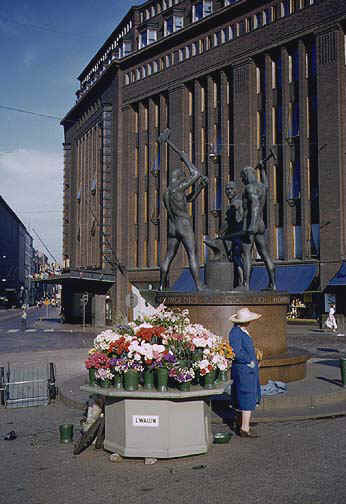
Helsinki in 1957
50 years later
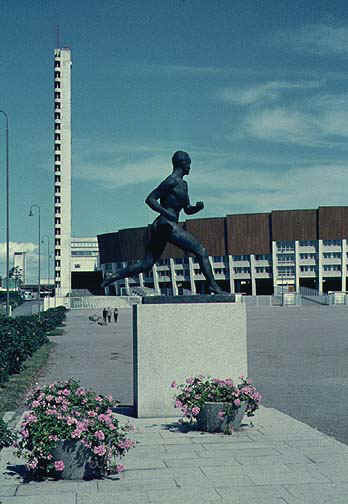
Olympic stadium (1952)
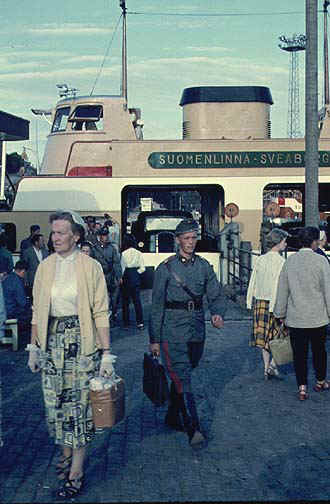
scene in 1957
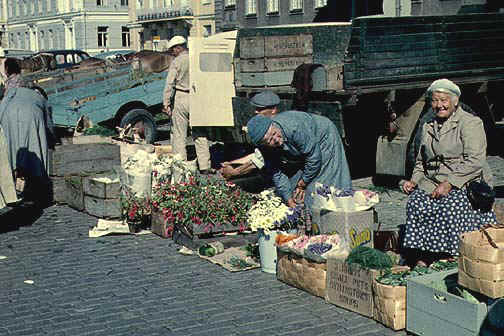
market
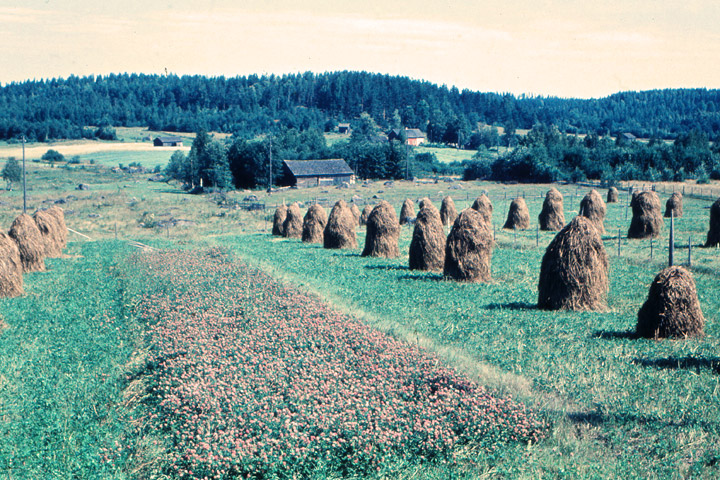
countryside
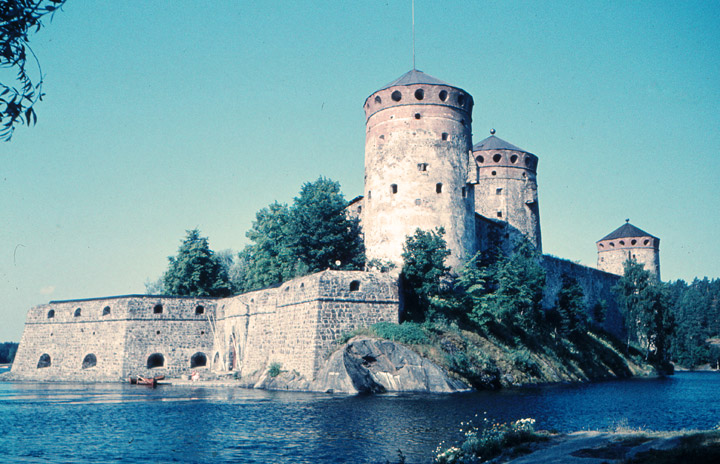
Olavinlinna Castle
More Photos of the Olavinlinna Castle
The building of Olavinlinna, castle of St. Olaf, began in 1475. The Danish-born founder of the castle, knight Erik Axelsson Tott, decided that a powerful fortification should be build to protect the strategically important Savo region. The castle was supposed to repel Russian attacks from the east and to guarantee the control of the Savo region for the Swedish Crown. The history of Olavinlinna is a mixture of medieval arms clashing, cannons roaring and every-day chores inside the security of the castle’s thick walls.
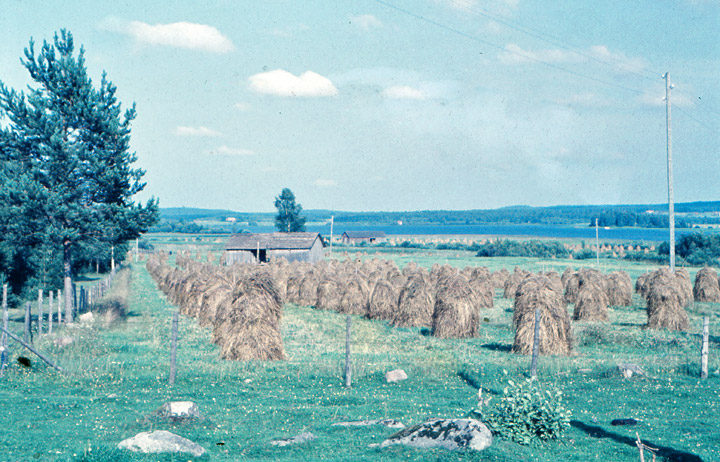
traveling North
![]()

above the Arctic circle
(where the railway and the cars used the same bridge)
Saami
, people living in the northernmost part of Norway, Sweden, Finland, and western Russia. Outside of their communities, Saami were formerly known as Lapps or Laplanders, terms they consider derogatory (see Saamiland). Altogether, Saami number between 50,000 and 100,000, and more than half live in Norway. More than half the Saami people still speak the Finno-Ugric Saami language (see Finno-Ugric Languages) in addition to the national language dominant in the area where they live: Norwegian, Swedish, Finnish, or Russian. The Saami language, which is related to Finnish and Hungarian, consists of many dialects.
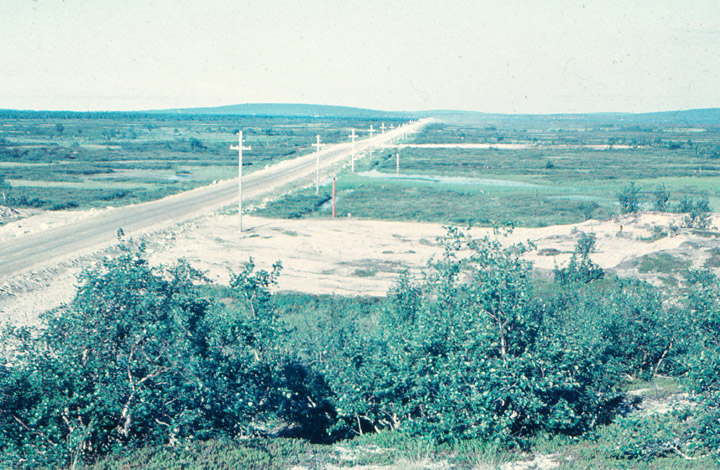
the open spaces where you meet the Saami
Saami entered northern Europe from the east several thousand years ago, before the Scandinavians, Finns, and Russians. Originally nomadic hunters and fishers, Saami later developed a form of domestic reindeer breeding similar to that practiced by many peoples in Siberia. In time, some Saami became less nomadic, settling down as farmers and ocean fishers.
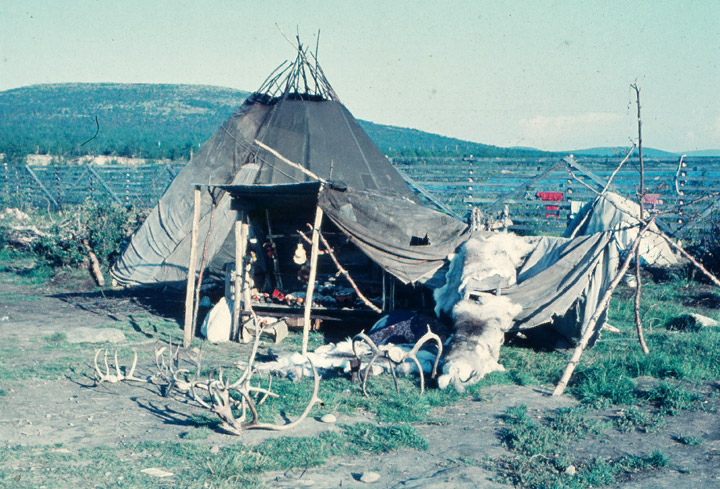
Saami dwelling
For centuries the Saami have undergone forced assimilation into the national populations. Government policies in the 18th and 19th centuries curtailed the Saami way of life and restricted the use of the Saami language. The situation began to improve slowly in the 20th century. As of 1966 the Saami, as an ethnic minority group and an indigenous people, came under the protection of the United Nations under Article 27 of the International Covenant on Civil and Political Rights. By the 1970s the Saami language was once again taught to children in Saami schools. By the twentieth century many Saami had adopted contemporary occupations, from teaching to business to government. In the mid-1990s only about 10 percent of the Saami population continued to herd reindeer. The majority of reindeer-breeding Saami have retained the daily use of the Saami language and the colorful traditional clothing.
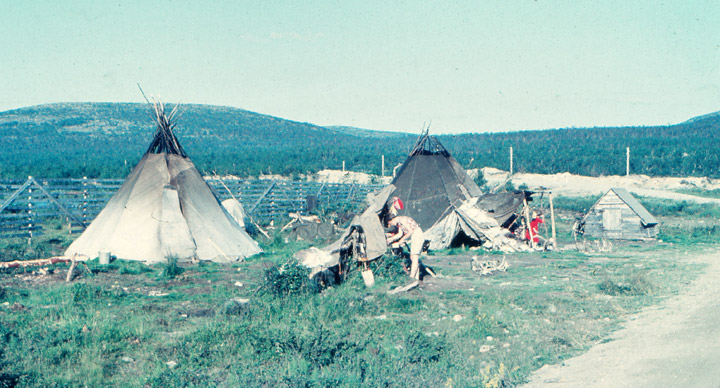
purchasing Saami clothing articles
Traditionally the Saami religion was shamanism, a belief in spirits that communicate with the shamans or priests, but today shamanistic practices are overshadowed by participation in the national churches of the various countries where Saami reside. Most contemporary Saami communities include non-Saami as well.
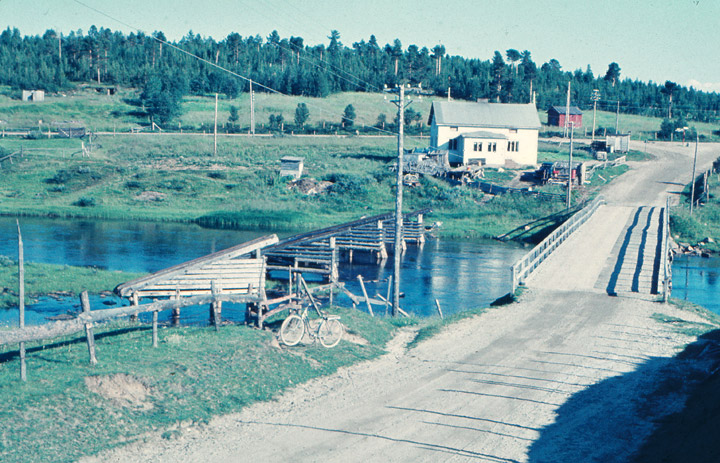
wooden barriers are used to keep the ice from destroying the bridge in winter
Saami cooperate with each other across national boundaries, and contact with Russian Saami is increasing. Since the 1970s organizations of Saami, such as the Saami Institute, promote reindeer breeding and other Saami interests across national borders. In Finland, Norway, and Sweden, Saami parliaments function as advisory committees to the national parliaments. The overwhelming common issue is the Saami right to traditional livelihoods in the regions where they have always resided.Contributed By: Myrdene Anderson for Microsoft Encarta
![]()
![]()
![]()

Other Countries in Europe
 Albania
Albania |
 Andorra
Andorra |
 Austria
Austria |
 Belgium
Belgium |
 Bellorussia
Bellorussia |
 Berlin
Berlin |
 Bosnia
Bosnia |
 Bulgaria
Bulgaria |
 Croatia
Croatia |
 Cyprus
Cyprus |
 Czech Republic
Czech Republic |
 Denmark
Denmark |
 England
England |
 Estonia
Estonia |
 Finland
Finland |
 France
France |
 Germany
Germany |
 Gibraltar
Gibraltar |
 Greece
Greece |
 Hungary
Hungary |
 Ireland
Ireland |
 Isle of Man
Isle of Man |
 Italy
Italy |
 Liechtenstein
Liechtenstein |
 Lithuania
Lithuania |
 Luxembourg
Luxembourg |
 Macedonia
Macedonia |
 Mallorca
Mallorca |
 Malta
Malta |
 Monaco
Monaco |
 Montenegro
Montenegro |
 the Netherlands
the Netherlands |
 Norway
Norway | |
 Poland
Poland |
 Portugal
Portugal |
 Romania
Romania |
 Russia
Russia |
 San Marino
San Marino |
 Sardinia
Sardinia |
 Sicily
Sicily |
 Slovenia
Slovenia |
 Slovakia
Slovakia |
 Spain
Spain |
 Sweden
Sweden |
 Switzerland
Switzerland |
 Turkey
Turkey |
 Vatican City
Vatican City |
